By Matti Friedman | AP Associated Press – Wed, Nov 23, 2011
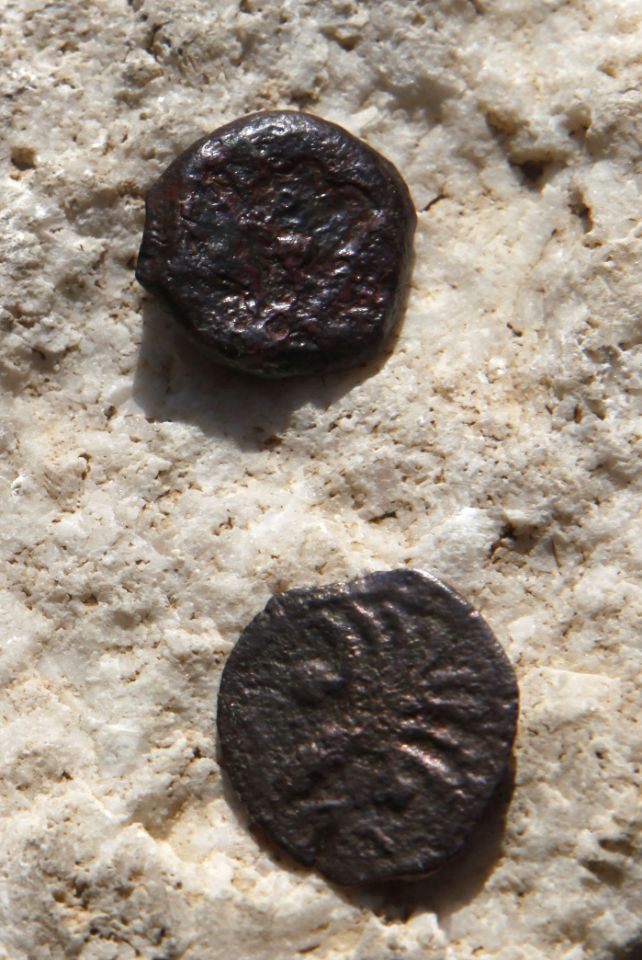
Israeli Archaeologists Rethink Herod’s Role In Western Wall Construction
JERUSALEM (AP) — Newly found coins underneath Jerusalem’s Western Wall could change the accepted belief about the construction of one of the world’s most sacred sites two millennia ago, Israeli archaeologists said Wednesday.
The man usually credited with building the compound known to Jews as the Temple Mount and to Muslims as the Noble Sanctuary is Herod, a Jewish ruler who died in 4 B.C. Herod’s monumental compound replaced and expanded a much older Jewish temple complex on the same site.
But archaeologists with the Israel Antiquities Authority now say diggers have found coins underneath the massive foundation stones of the compound’s Western Wall that were stamped by a Roman proconsul 20 years after Herod’s death. That indicates that Herod did not build the wall — part of which is venerated as Judaism’s holiest prayer site — and that construction was not close to being complete when he died.
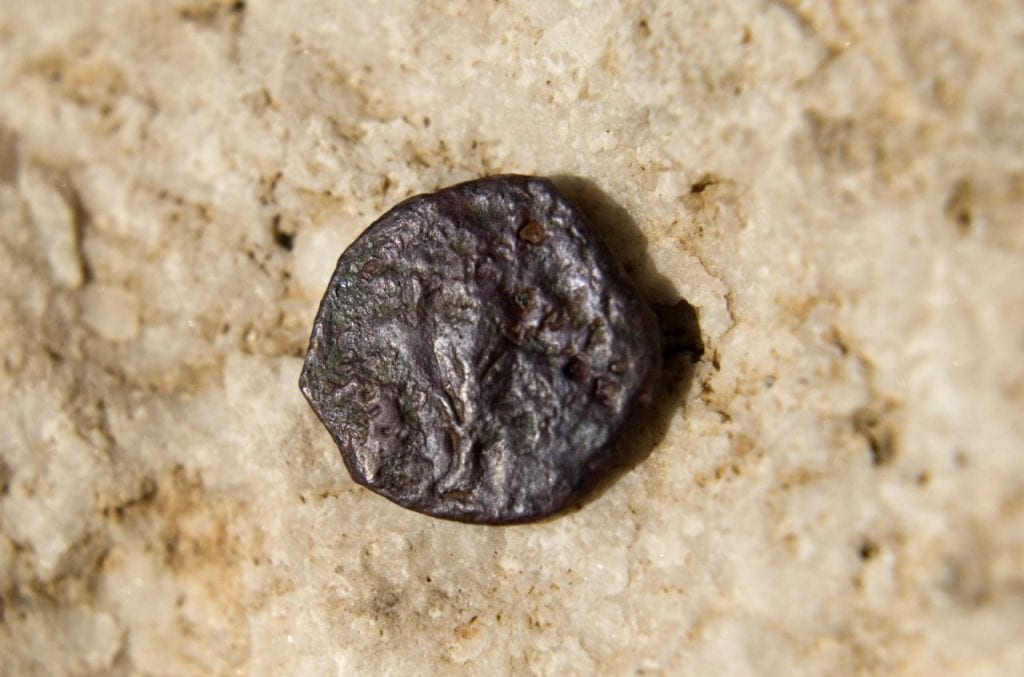
The find changes the way we see the construction, and shows it lasted for longer than we originally thought,” said the dig’s co-director, Eli Shukron.
The four bronze coins were stamped around 17 A.D. by the Roman official Valerius Gratus. He preceded Pontius Pilate of the New Testament story as Rome’s representative in Jerusalem, according to Ronny Reich of Haifa University, one of the two archaeologists in charge of the dig.
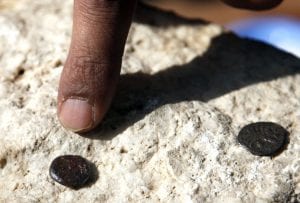
Israeli Archaeologists Rethink Herod’s Role In Western Wall Construction
The coins were found inside a ritual bath that predated construction of the renovated Temple Mount complex and which was filled in to support the new walls, Reich said.
They show that construction of the Western Wall had not even begun at the time of Herod’s death. Instead, it was likely completed only generations later by one of his descendants.
The coins confirm a contemporary account by Josephus Flavius, a Jewish general who became a Roman historian. Writing after a Jewish revolt against Rome and the destruction of the Temple by legionnaires in 70 A.D., he recounted that work on the Temple Mount had been completed only by King Agrippa II, Herod’s great-grandson, two decades before the entire compound was destroyed.
Scholars have long been familiar with Josephus’ account, but the find is nonetheless important because it offers the “first clear-cut archaeological evidence that part of the enclosure wall was not built by Herod,” said archaeologist Aren Maeir of Bar-Ilan University, who was not involved in the dig.
Josephus also wrote that the end of construction left 18,000 workmen unemployed in Jerusalem. Some historians have linked this to discontent that eventually erupted in the Jewish revolt.
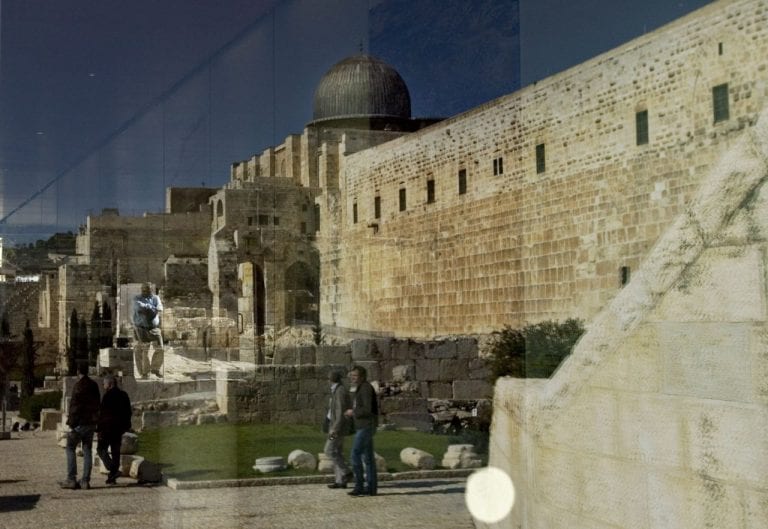
The compound, controlled since 1967 by Israel, now houses the Al-Aqsa Mosque and the golden-capped Muslim shrine known as the Dome of the Rock. The fact that the compound is holy both to Jews and Muslims makes it one of the world’s most sensitive religious sites.
The dig in which the coins were discovered cleared a Roman-era drainage tunnel that begins at the biblical Pool of Siloam, one of the city’s original water sources, and terminates with a climb up a ladder out onto a 2,000-year-old street inside Jerusalem’s Old City. The tunnel runs by the foundation stones of the compound’s western wall, where the coins were found.
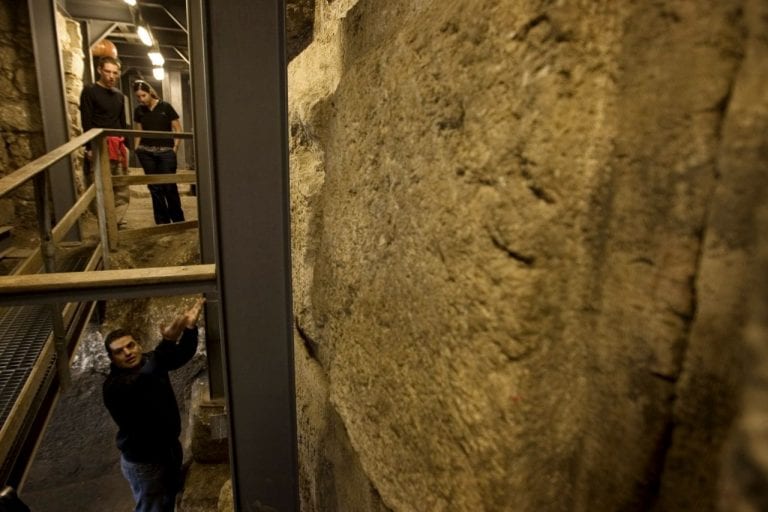
Israel’s Antiquities Authority archeologist Eli Shukron, below, stands in the Mikve area at the base of the Western Wall where an archaeological dig has uncovered ancient coins which may help date the Western Wall, the holiest site where Jews can pray, in Jerusalem’s Old City, Wednesday, Nov. 23, 2011. Newly found coins underneath the Western Wall are identified as stamped by a Roman proconsul 20-years after the death of Herod, a Jewish ruler who died in 4 B.C., and could change the accepted belief about the construction of one of the world’s most sacred sites two millennia ago, Israeli archaeologists said Wednesday. (AP Photo/Sebastian Scheiner)
The drainage tunnel was excavated as part of the dig at the City of David, which is perhaps Israel’s richest archaeological excavation and its most contentious.
The dig is being carried out inside the Palestinian neighborhood of Silwan, and is funded by a group associated with the Israeli settlement movement that opposes any division of the city as part of a future peace deal.
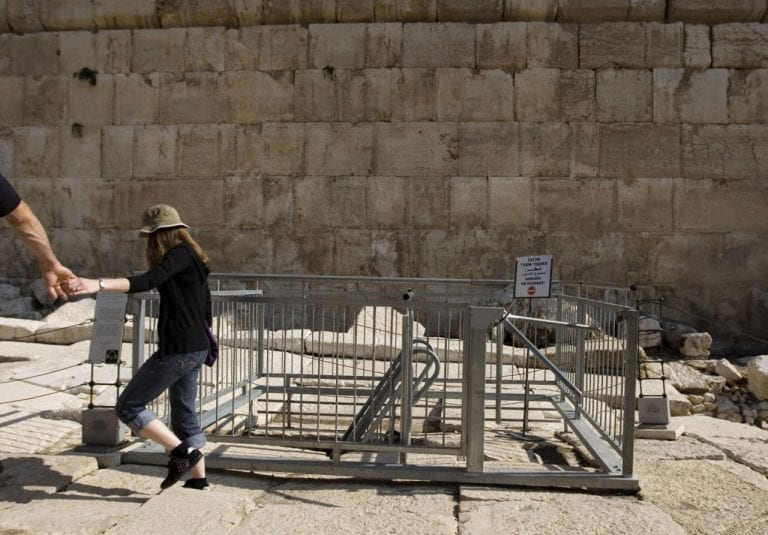
The excavation of the tunnel has also yielded a Roman sword, oil lamps, pots and coins that scholars believe are likely debris from an attempt by Jewish rebels to hide in the underground passage as they fled from the Roman soldiers.
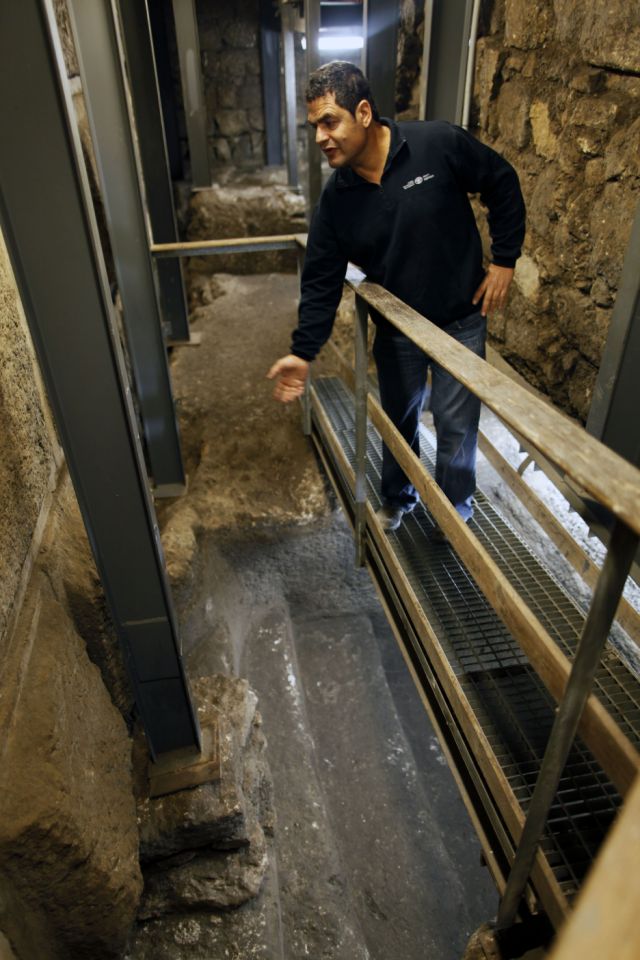
Israeli Archaeologists Rethink Herod’s Role In Western Wall Construction
Israel’s Antiquities Authority archeologist Eli Shukron stands in the Mikve area at the base of the Western Wall where an archaeological dig has uncovered ancient coins which may date the Western Wall, the holiest site where Jews can pray, in Jerusalem’s Old City, Wednesday, Nov. 23, 2011.



